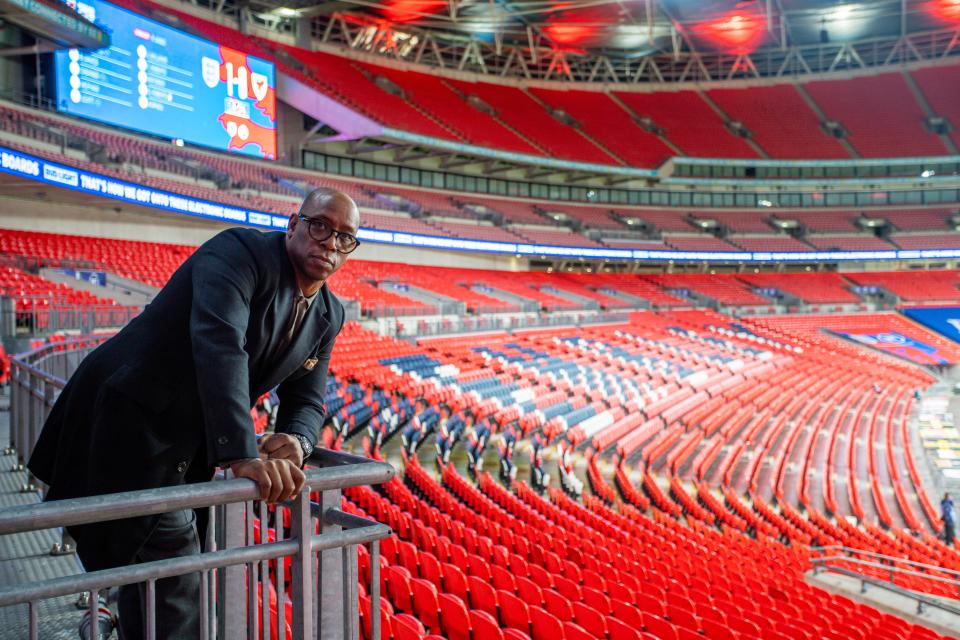Bring Back The Fans: How the Evening Standard campaigned for safe return of supporters

From the very start the Evening Standard led calls to Bring Back the Fans.
And today’s news is a victory for our concerted campaign to get the government to open stadium doors to supporters once again.
From Arsenal legend, Ian Wright, launching our drive to begin the recovery for football clubs hit so hard by coronavirus – to a road map to the safe return of spectators, we have fought hard for today’s announcement.
Up to 4,000 fans will be allowed into outdoor sports events when the national lockdown ends.
Spectator sports outdoors will be allowed in Tier 1 and Tier 2 areas, possibly as early as week when the latest national lockdown is set to end on December 2.
In Tier 1 areas that means a maximum crowd size of either 50 per cent stadium occupancy or 4,000 spectators – whichever number is smaller.
In Tier 2, it will be 50 per cent of capacity or 2,000 – whichever number is smaller. Indoors, there will be a limit of 1,000 in both Tiers 1 and 2.
In Tier 3, fans will still not be able to watch their teams live.
But today is a major result for fans and clubs, who have been so desperate to get the doors open again.
Much of the frustration felt by supporters has been the sense that they have been treated unfairly.
As Wright put it when writing exclusively for the Standard last month: “They are not even giving football a chance. And yet at the same time 3,000 people can sit inside the Royal Albert Hall. That doesn’t make any sense to me at all.
“How can it be safer indoors than it would be outside at a football ground when there’s loads of distance between people? It’s obvious that football fans are being treated differently than theatregoers or ballet lovers. That’s got to change.”
By last month it was estimated that playing football behind closed doors had cost the London economy £1billion already.
Just today Tottenham chairman Daniel Levy bemoaned “an irrecoverable loss of income” after announcing losses of £63.9million.
Yet the feeling within the game for some time has been that the technology and procedures are there to bring fans back safely.
A firm that specialises in crowd management, ONHYS, claimed as many as 38,000 people could be housed inside Wembley.
Their chief executive, Sebastien Paris, told the Standard: “Technology is a means to achieve something. It’s not a miracle solution. We have new technology that could change the way we take decisions but, at the end, the deciders need to make the decisions. But taking a decision with good metrics is better than taking with just overall statistics.
“I think it’s time to take better decisions that are more grounded on scientific analysis and more contextual to the situation.”
And Germany has remained a shining example of how to get fans back in seats.
The Bundesliga has led the way in its handling of Covid-19 as the first of Europe’s major leagues to return to action – and then showcasing how supporters could return to grounds in a safe environment.
Their chief executive Robert Klein said he was there for the UK if we wanted his help.
“Everything we have done is on our website and we will happily share in all the individual experiences. The Premier League’s doing pretty well.
“Fans are the next step and I just hope they can come as soon as possible, where health can be the priority and the risk is as low as possible.”
Today’s announcement is the first step to football returning to something like normality and to finally BRING BACK THE FANS.
Read More
Millwall, Charlton and QPR support our Bring Back the Fans campaign
Crouch: Next few days critical to stop football clubs from folding
PL in talks with government over vaccine role in fans return

 Yahoo Movies
Yahoo Movies 